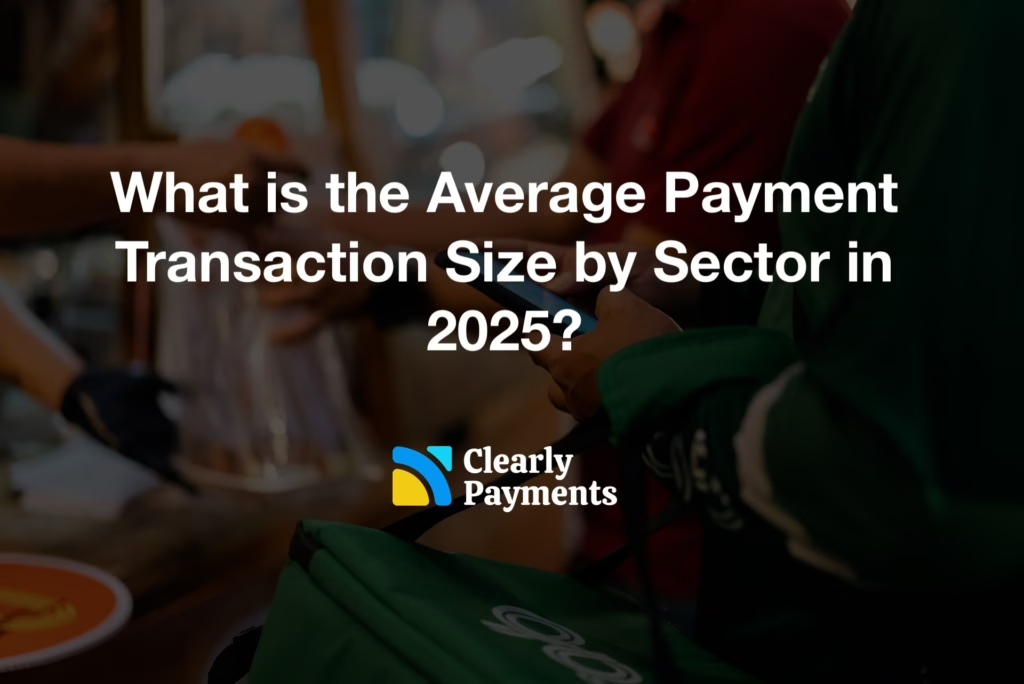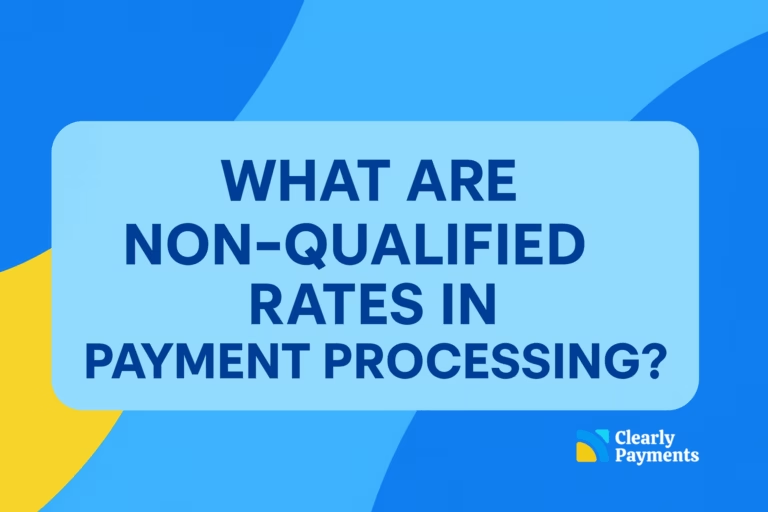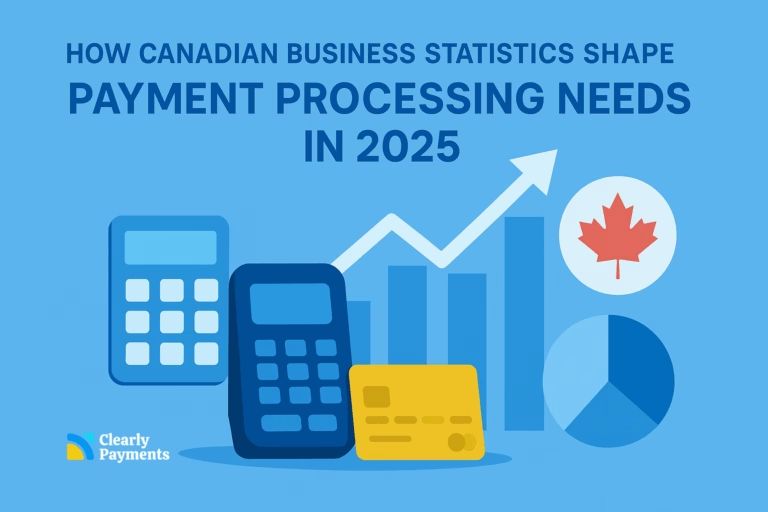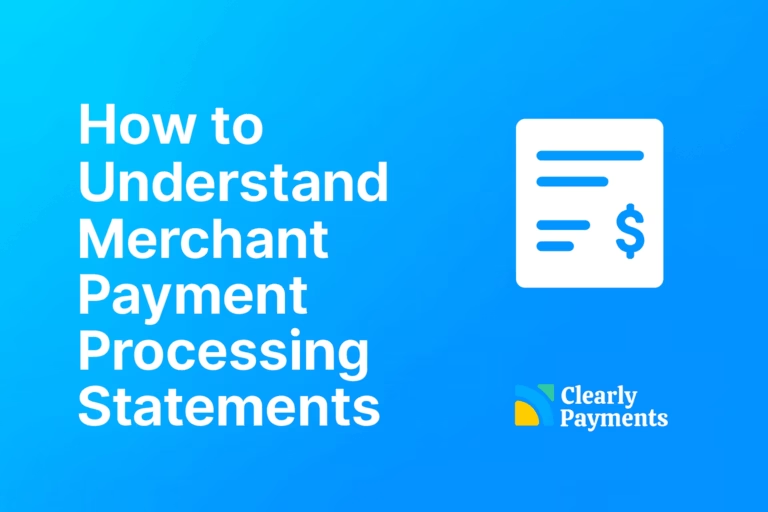In 2025, the average transaction size, sometimes called average order value (AOV) or average ticket, or average transaction size (ATS), varies a lot by sector. Online retail orders tend to land in the low-to-mid hundreds of dollars; everyday retail and grocery orders are much smaller but far more frequent, travel and B2B transactions are much larger, and specialized areas such as debt collection and B2B services can show very high single-ticket values.
Below, this article explains what average transaction size means, why it matters for a business, and gives sector-by-sector numbers.
What is “Average transaction Size”?
Average transaction size (ATS) is simply the total dollar amount of sales divided by the number of transactions. For example, if a coffee shop makes $10,000 across 2,000 sales, its average transaction size is $5. In e-commerce, this is usually called average order value (AOV), and for in-person retail, it’s known as the average ticket.
In short, it’s a snapshot of how much customers typically spend per purchase.
Why Transaction Size Matters in Payments
The average transaction size affects nearly everything in the payments world. Merchants with higher ATS tend to pay more in absolute fees per sale but benefit from higher revenue per customer. Businesses with lower ATS, such as convenience stores, rely on fast, frequent, low-fee transactions to stay profitable.
2025 Average Transaction Size by Sector
Before diving into each industry, here’s a quick look at how average transaction sizes compare across sectors in 2025.
Average Transaction Size by Sector (2025)
| Sector | Average Transaction Size (2025) | Typical Range (USD) | Notes / Trends |
|---|---|---|---|
| E-commerce (general) | ~$150 | $140–$180 | Global average; desktop orders higher than mobile |
| In-store retail | ~$50 | $20–$80 | Depends on store type; higher for specialty goods |
| Grocery / Supermarkets | ~$40 | $10–$100 | Low-ticket, high-frequency purchases |
| Restaurants (QSR) | ~$15 | $6–$20 | Small tickets, high turnover |
| Restaurants (Full service) | ~$45 | $25–$80 | Higher spend per meal, lower volume |
| Travel & Hospitality | ~$600 | $150–$1,000+ | Large, infrequent purchases |
| Marketplaces (multi-seller) | ~$120 | $50–$250 | Wide variation by category |
| Digital Goods & Subscriptions | ~$20 | $2–$200 | Recurring or app-based payments |
| B2B Services / Invoicing | ~$2,000 | $500–$50,000+ | Big invoices, slower turnover |
| Financial / Debt Collection | varies | ₹5,800+ (India example) | High-value, low-frequency category |
| Buy Now, Pay Later (BNPL) | ~$100 | $70–$200+ | Market-dependent variation |
E-commerce and Online Retail
E-commerce continues to grow rapidly in 2025, and the global average order value now sits around $150, up from the $120 range a few years ago. Desktop orders remain higher than mobile purchases because shoppers tend to buy multiple items when browsing on larger screens.
AOV in eCommerce is driven by product mix, shipping incentives, and upselling tactics. Many merchants raise AOV by offering free shipping above a threshold or bundling related products.
In-Store Retail and Specialty Shops
In-person retail transactions are smaller but steady. The average in-store purchase falls between $20 and $80, depending on the store type. Specialty shops like outdoor gear or electronics have higher tickets, while general retail and convenience stores see smaller, faster purchases.
Contactless and mobile wallets have sped up checkout times, which encourages more frequent, but smaller, transactions.
Grocery and Supermarkets
Groceries are the classic low-ticket, high-volume business. The average grocery basket in 2025 sits around $40 to $60 in most North American cities. Online grocery orders tend to be larger, often over $100, as shoppers buy in bulk to reach delivery minimums.
For payment processors, grocery stores generate enormous transaction counts but thin margins, making interchange optimization critical.
Restaurants and Food Delivery
Restaurant transactions come in two distinct patterns. Quick-service restaurants (QSRs) such as coffee shops and fast food chains average $6 to $20 per ticket, while full-service restaurants typically range between $25 and $80.
Digital ordering and delivery platforms have pushed up average spend slightly, as customers tend to order extras or pay higher delivery-inclusive totals.
Travel and Hospitality
The travel and hospitality sector has some of the highest average transaction values of any consumer-facing industry. Airline tickets, hotel bookings, and vacation packages average between $150 and $1,000+, depending on the market.
As the industry continues to recover, these high-ticket transactions remain a major source of revenue for payment processors but also come with higher risk and longer settlement times.
Marketplaces and Multi-Seller Platforms
Marketplaces like Amazon, Etsy, and niche e-commerce platforms process a huge mix of small and large transactions. In 2025, average tickets hover around $120, but can swing from $20 to several hundred depending on product category.
These platforms often use split payments, holding funds for multiple sellers at once, which adds complexity for processors.
Digital Goods and Subscriptions
Digital subscriptions, app payments, and streaming services are usually small but recurring. Typical payments range from $1.99 to $29.99 per month, or up to $200 annually for higher-value plans.
For processors, recurring billing offers steady, predictable volume and very low fraud rates, a good profile for risk management.
B2B Services and Invoicing
Business-to-business payments often involve large invoices and slower settlement cycles. Average transaction sizes in this sector can range from $500 to $50,000+, with an overall mean around $2,000.
B2B merchants need tools for invoicing, reconciliation, and payment terms — far beyond simple card acceptance.
Financial Services and Debt Collection
Certain financial categories, such as insurance payments or debt collection, see extremely high average tickets but low frequency. For example, India’s UPI network recorded average debt collection transactions around $5,800 in 2025.
These high-value payments require strict identity checks and settlement safeguards, but they represent meaningful growth for digital rails.
Buy Now, Pay Later (BNPL)
BNPL continues to shape spending habits globally. Average BNPL tickets in 2025 range from $70 in the U.S. to over $200 in parts of Europe. BNPL encourages higher-value purchases but increases credit and default risk for lenders and merchants.
For processors, BNPL transactions have become a growing share of retail and e-commerce payments, reshaping the mix of transaction sizes across the economy.
The Overall Average Transaction Size
Across industries, the global average online transaction sits between $144 and $153 as of early 2025, with forecasts pointing toward $150–$180 by year-end. Desktop orders remain higher than mobile, and new payment types like BNPL and digital wallets are steadily raising transaction values across many categories.
Merchants that understand and monitor their own average transaction size can better price, market, and optimize every sale, and payment processors like Clearly Payments use these benchmarks to build smarter, fairer pricing models for their clients.




